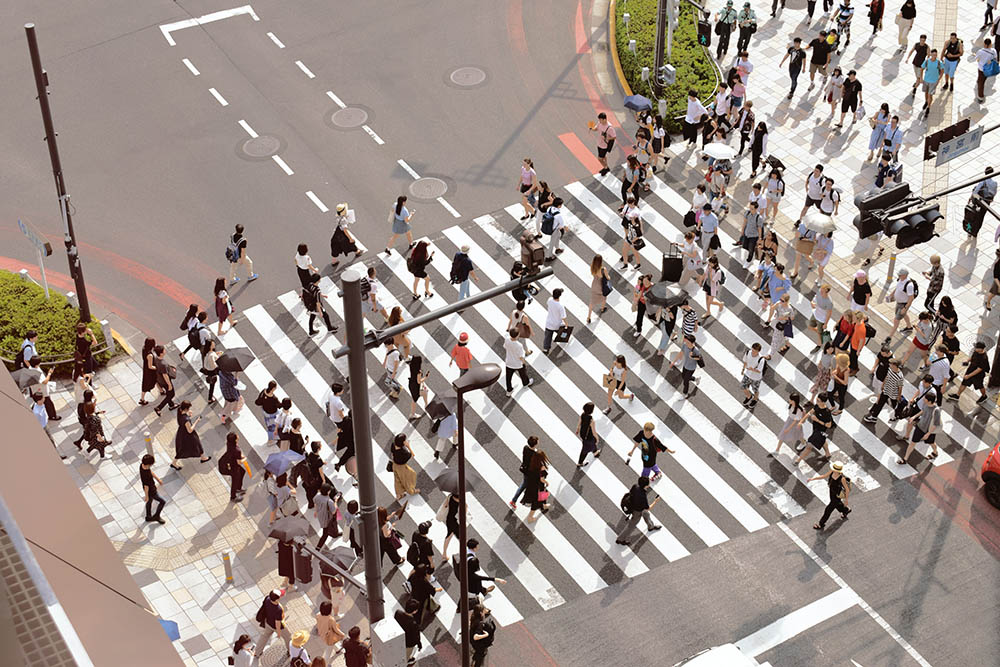On Apr. 11, Teresita Sy-Coson, vice-chair of SM Investments Corp, called on the Philippine government to prioritize job preservation and creation by allowing industries to resume 50 percent of their operations.
“If all the industries can start operating [at a capacity of] 50 percent, including the transport [sector], with all the medical precaution like making test kits more available and disinfecting measures and sanitation safeguards, then we can gradually increase the employment, including [jobs for] the returning OFWs (overseas Filipino workers) who are adding to our number of unemployment,” said Sy-Coson.
She further clarified that this gradual reopening of businesses should be done in May after the extension of the enhanced community quarantine to help cushion the economy from the economic impact of COVID-19. She also called on the private sector to provide as much assistance as they can to ensure employment for the masses and to keep the economy’s health in check.
In a statement released on Apr. 12, Department of Labor and Employment (DOLE) Secretary Silvestre Bello III also appealed to businesses to continue paying workers for the duration of the extended quarantine. This was in response to the high number of displacement across Luzon; in the same statement, it was reported that Metro Manila recorded the highest number of displaced employees at 246,810 with majority belonging to the manufacturing, hotel, restaurant, tourism, and education sectors.
“If all the industries can start operating [at a capacity of] 50 percent, including the transport [sector], with all the medical precaution like making test kits more available and disinfecting measures and sanitation safeguards, then we can gradually increase the employment, including [jobs for] the returning OFWs (overseas Filipino workers) who are adding to our number of unemployment,” said Teresita Sy-Coson.
On the same day, the Foundation for Economic Freedom (FEF), a public advocacy organization that seeks to advance economic liberty, also released a statement that recommended a calibrated easing on the restrictions imposed on the movement of people alongside proposed conditions that can be implemented while allowing a limited resumption of economic activity.
Some of the conditions include disinfection measures on all public transport vehicles before and after every trip, removal of checkpoints, continued ban on classes and religious events, staggered working hours, bans on congregations of more than 10, and continued widespread mass and random testing.
Best practices around the world
While it remains to be seen if the government will heed the call of Sy-Coson and FEF, the Philippines can take cues from countries that have contained or are in the process of flattening the curve to cautiously resume economic activity.
South Korea
One of South Korea’s most effective strategies has been maintaining transparency between government and citizens. Updates on policies, cases, and additional information are sent to everyone on an almost daily basis. So far, South Korea’s approach is a model in containing the pandemic without resorting to lockdowns and business closures.
Many of its victories over COVID-19 is influenced by its experience in controlling the 2015 outbreak of the Middle Eastern Respiratory Disease, an illness that also stems from a coronavirus strain.
So far, South Korea’s approach is a model in containing the pandemic without resorting to lockdowns and business closures. Many of its victories over COVID-19 is influenced by their experience in controlling the 2015 outbreak of the Middle Eastern Respiratory Disease.
Aggressive testing has been implemented to ensure that everyone who is working is healthy and will not be a danger to themselves and others. According to the World Health Organization’s Apr. 13 situation report, there are 10,537 confirmed cases with over 7,000 recoveries. Public transportation remains open but is at half capacity to maintain social distancing. Public hygiene measures like providing PPEs, alcohol, and hand washing stations are strictly enforced through joint public and private efforts.
Spain
Spain has resumed regular activity for non-essential businesses on Apr. 13—mostly companies from the industrial and construction sectors as well as companies that cannot operate remotely. The Health Ministry published a guide for workers and businesses that can reduce the risk of a spike in COVID-19 cases.
Workers are recommended to use private transport to get to and from work to maintain social distancing. Flexible hours to avoid large gatherings in public and within the workplace and suspension of clock-in systems that use digital fingerprints are also encouraged.
In Spain, workers are recommended to use private transport to get to and from work to maintain social distancing. Flexible hours to avoid large gatherings in public and within the workplace and suspension of clock-in systems that use digital fingerprints are also encouraged.
Companies are urged to provide personal protective equipment like face masks and gloves when working around others. The guide also states that work clothes or uniforms should be taken off at the end of a shift, carried in a closed and sealed bag, and washed in hot water to be properly disinfected.
The strongest recommendation is to avoid going to work if they are experiencing any symptoms associated with COVID-19. A pandemic hotline can be contacted in order to reach healthcare providers that can facilitate testing, isolation, and treatment.
Singapore
Singapore is another efficient example. Schools and workplaces remain open in Singapore, although students and staff are subject to daily health checks and strict sanitation measures. They have also begun testing anyone who exhibits flu or pneumonia symptoms to make sure cases are identified and treated early.
For employees, the government has created leave of absence and stay-at-home financial support programs in which employers and self-employed individuals (excluding those who can work from home) are eligible to receive S$100 (₱3,573) per affected worker for the duration of the program.
Taiwan and Hong Kong
Closer to home, Taiwan and Hong Kong both acted swiftly once news of the outbreak had been confirmed, implementing travel restrictions, rigorous testing procedures, and quarantine measures for those coming from overseas or those who have possibly come into contact with a carrier.
United States
In the US, companies like Amazon have decided to fill 100,000 full-time and part-time positions to staff their distribution centers and delivery networks to meet public demand and curb unemployment losses. Grocery establishments like Walmart have also implemented shorter operating hours to allow proper and thorough disinfection of its stores.
President Donald Trump also signed an $8 billion emergency measure in early March that allocated $3 billion for vaccine research and the remaining sum for prevention measures. He also invoked the Defense Production Act to mobilize private sector resources towards production of masks, ventilators, testing swabs, and gloves.
It has become clear that the coronavirus will not pass without leaving long-term economic consequences. While it may be difficult to effectively put out fires before they have even begun, it is important for all sectors to plan for the future and prepare for what is coming next.





